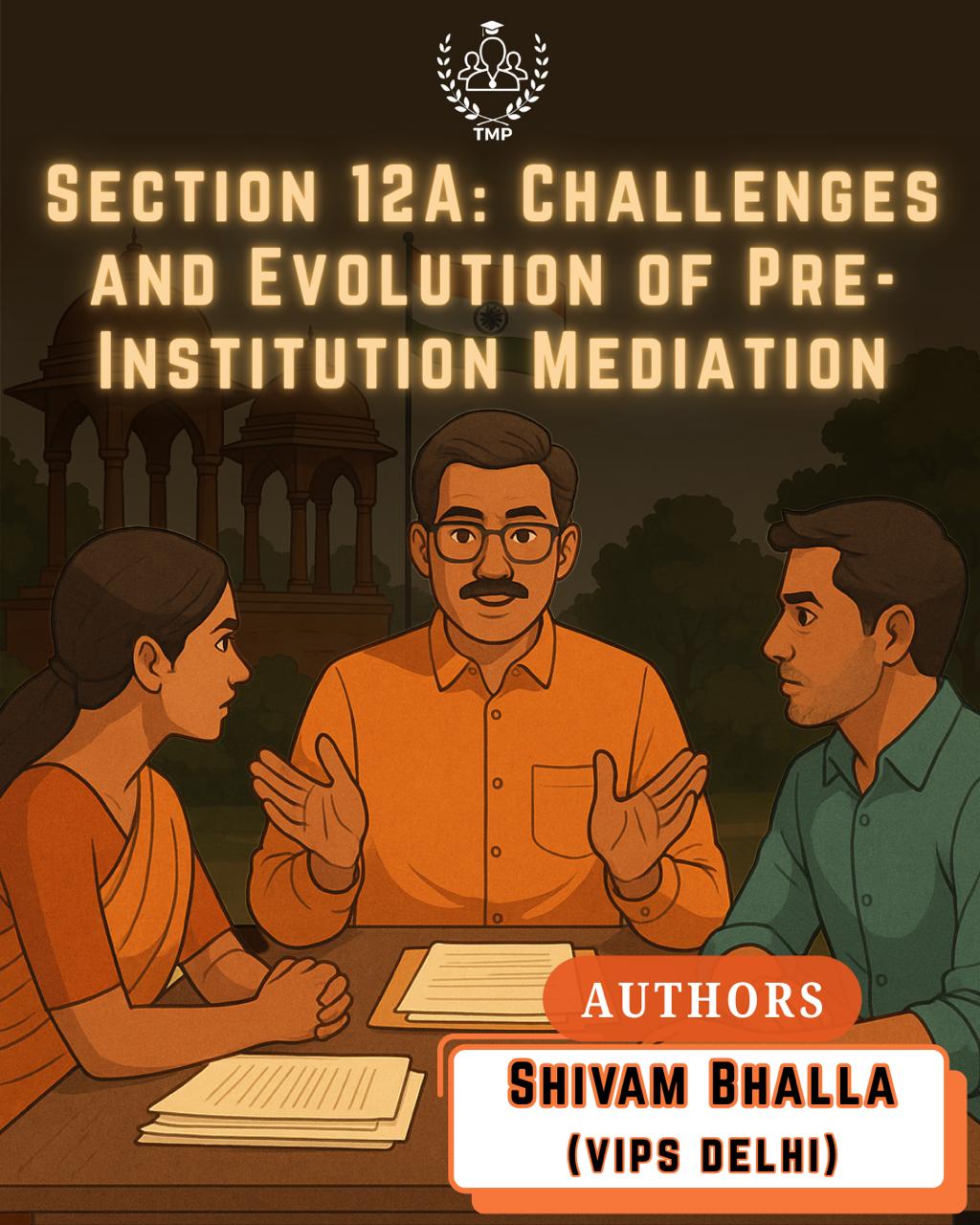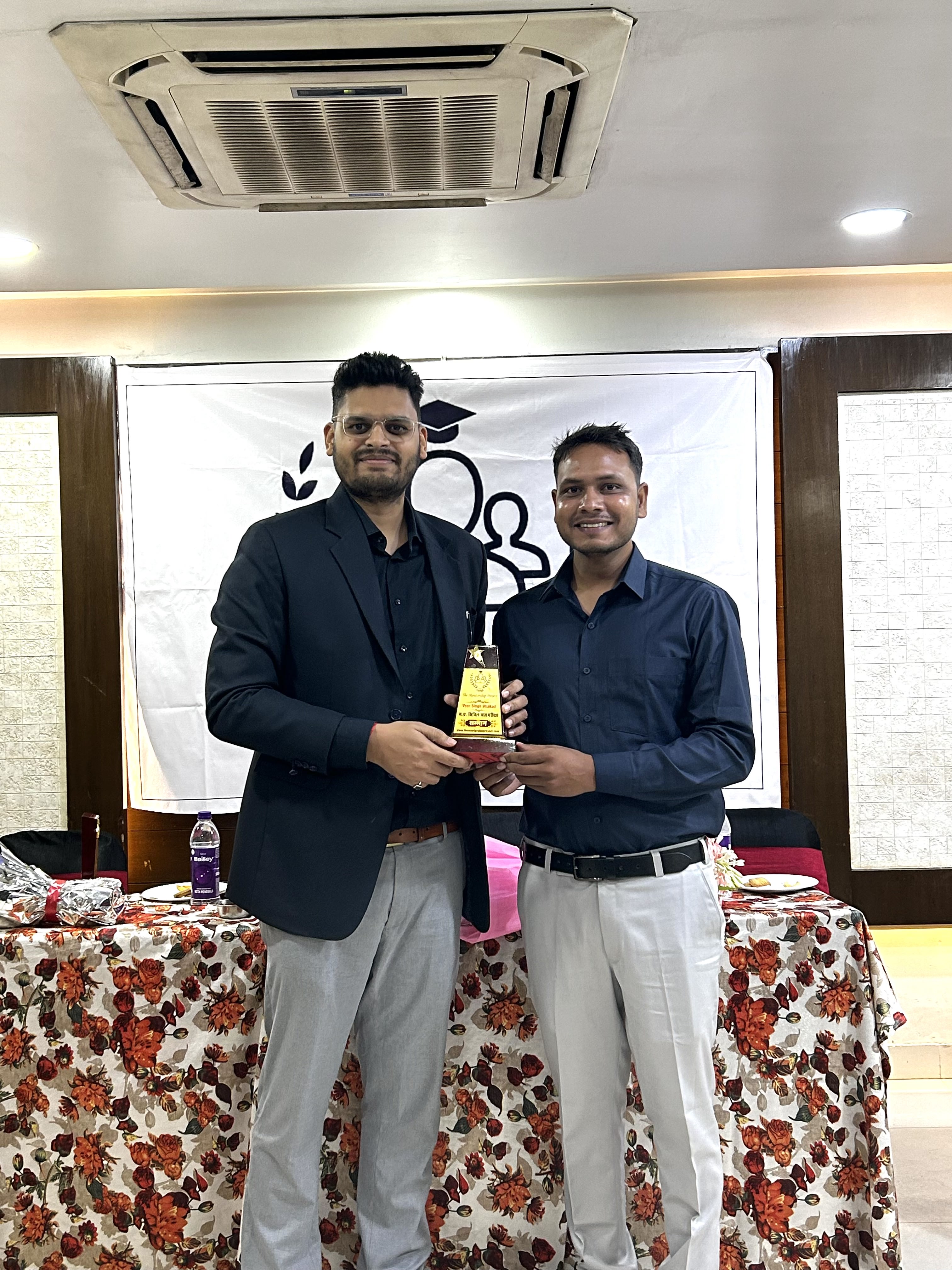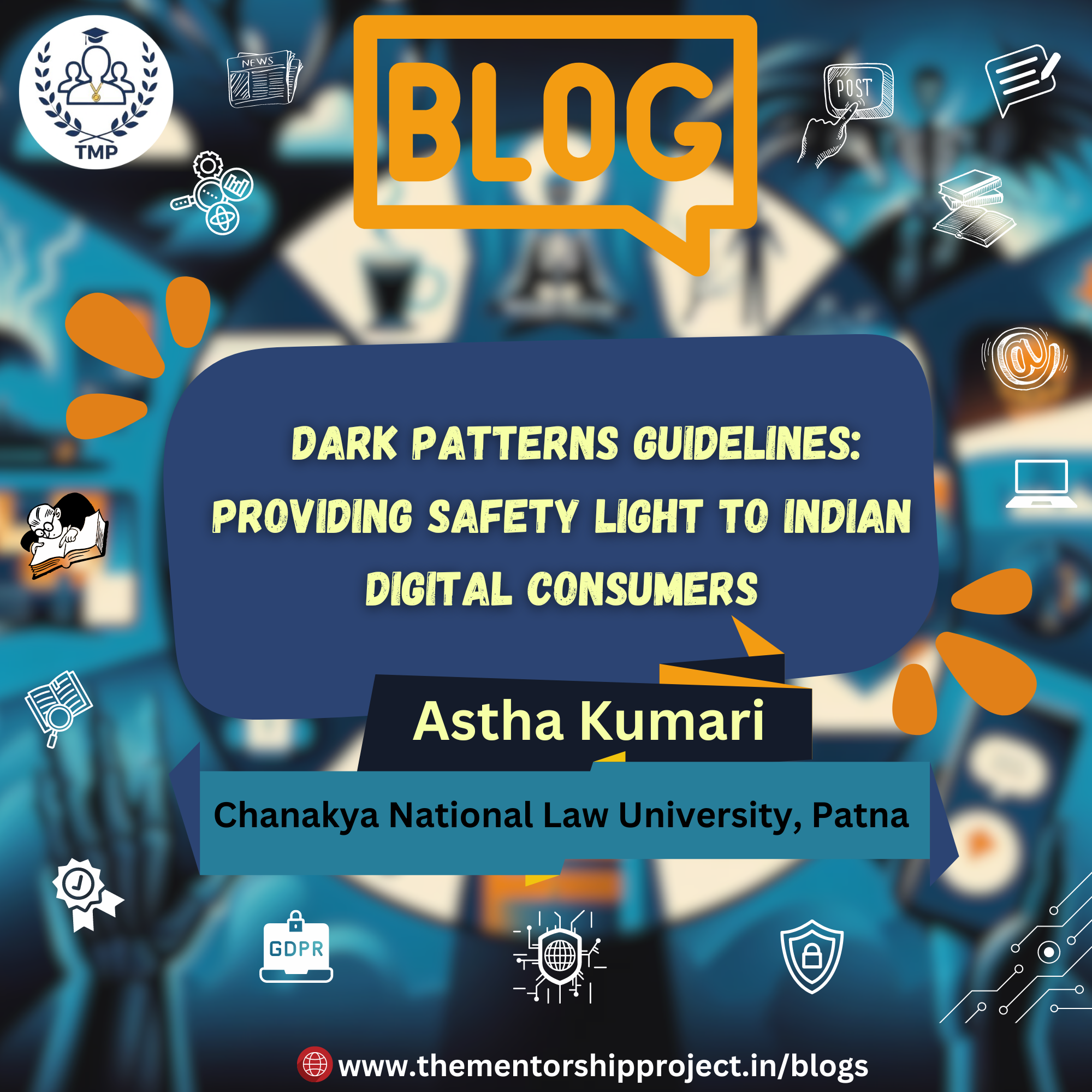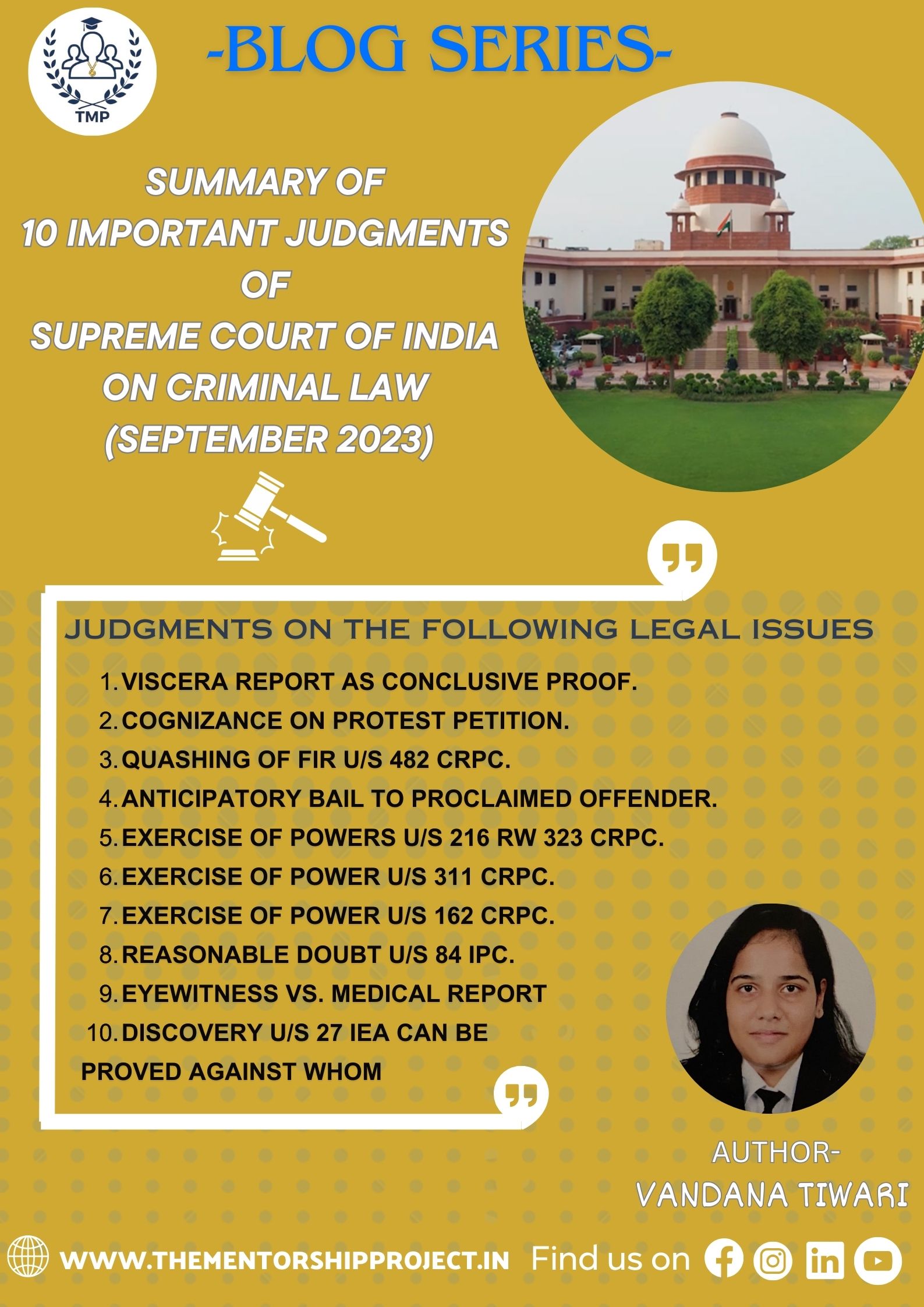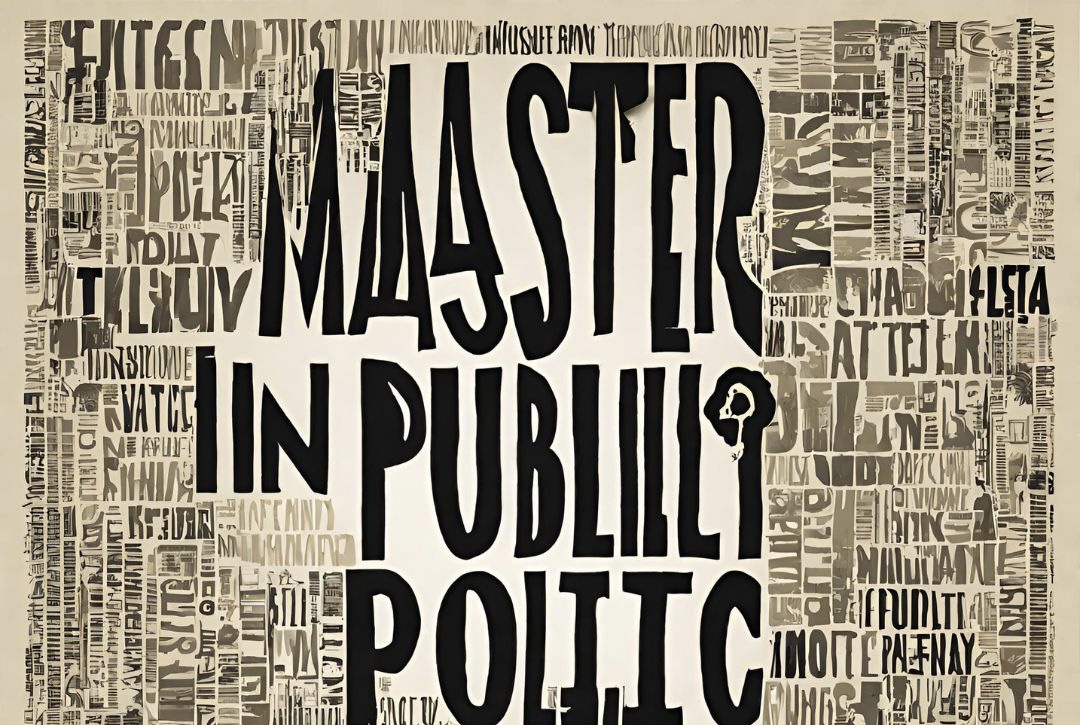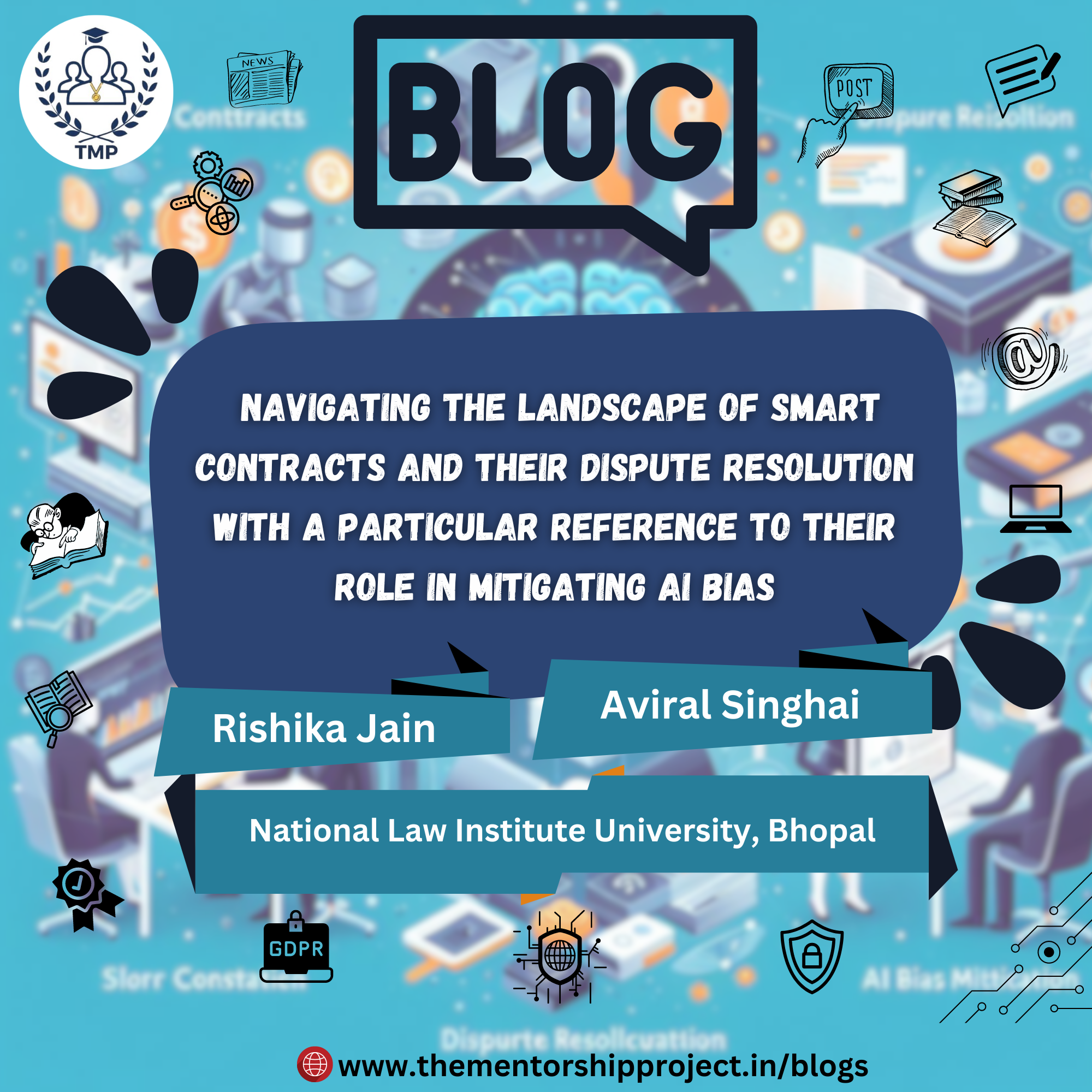September 26 , 2025
The Evolution and Challenges of Pre-Institution Mediation under Section 12A of the Commercial Courts Act, 2015
I. Introduction
The Commercial Courts Act of 2015 was enacted with the intent to make the process smoother for commercial litigation and enhance India’s ranking in the Ease of Doing Business index which also helped in improving the rankings from 142 in 2014 to 63 in 2020 after which the index was discontinued by the world bank due to data issues. A major development in bringing reform to commercial litigation was the insertion of Section 12Athrough the Commercial Courts (Amendment) Act, 2018, mandating pre-institution mediation (PIM) before initiating a commercial suit provided that no urgent interim relief is sought by the plaintiff.
This research note focuses on the legislative background and judicial evolution of Section 12A of the commercial courts act, it was included by the amendment of 2018 of the Commercial Courts Act, examining its implementation, and identifies necessary reforms to improve its effectiveness.
II. Legislative Intent and Framework of Section 12A
In order to lessen the load on commercial courts, Section 12A was passed, which encourages parties to settle disagreements before bringing legal action. It stipulates that, in accordance with the Legal Services Authorities Act of 1987, no lawsuit may be filed unless it requests immediate interim relief without first utilizing the pre-institution mediation remedy.
Key features of Pre-institution mediation are as follows:
• A mandatory pre-litigation mediation process for disputes not involving urgent interim relief.
• Mediation to be conducted through authorities designated by State Legal Services Authorities (SLSAs).
• A 90-day window, extendable by another 30 days with consent.
• A successful mediation culminates in a settlement agreement having the status of a decree under the Code of Civil Procedure, 1908.
The 2018 Amendment of the commercial courts act explicitly recognized the objective of reducing multiple and frivolous filings and promoting out-of-court settlements for commercial disputes.
III. Judicial Interpretation and Enforcement
While the language of Section 12A appears mandatory, judicial interpretations initially varied—leading to procedural uncertainty until the Supreme Court decisively settled the issue.
1. Ms. Devyani International Ltd. Vs Airport Authority of India (AAI)& Ors. 2025
The Plaintiff Devyani International filed a suit against AAI for concealment of facts and fraud. The plaintiff tried to bypass the mandatory pre mediation filing urgent interim relief due to encashment of bank guarsntee by AAI under section 12A of the Commercial Courts Act 2015.
Issue raised before the High Court of Jammu & Kashmir was that If a plaintiff wants urgent interim relief without proving any immediate or reasonable urgency, can they avoid the required pre-institution mediation under Section 12A of the Commercial Courts Act, 2015?
To this the court held that there was no real or immediate threat of encashment of bank guarantee by AAI at the time of filing the petition.
The court further stated that the exception of urgent interim relief must only be invoked at the time of real urgency and not to evade mandatory pre institutional mediation.
Thus the court found the suit to be non-maintainable thus by just merely filing for urgent interim relief does not make the plaintiff automatically entitled to skip the mediation process.
2. Aditya Birla Fashion & Retail Ltd. v. Saroj Tandon. 2024
The plaintiff Aditya Birla leased a shop but due to the pandemic induced closure terminated the lease and claimed refund. They initiated the pre instituted mediation under section 12A through South District Legal Service Authority (SDLSA), Saket but the respondent failed to appear on the date of mediation thus the mediation was declared a non-starter. Defendant filed a counter claim but did not initiate a separate mediation. Plaintiff sought rejection of counter claim as mediation was not started.
Issue presented before the court was Are counterclaims in commercial suits that do not seek urgent interim relief subject to Section 12A's mandatory pre-institution mediation?
The court held that as long as no urgent interim relief is requested, pre-institution mediation under Section 12A is required for both original suits and counterclaims.
The court further stated that If the mediation requirement is not fulfilled, rejection under Order VII Rule 11 is still appropriate.The counterclaim is still valid and cannot be rejected because it was submitted on February 21, 2022, before the deadline of August 20, 2022.
3. Patil Automation Pvt. Ltd. v. Rakheja Engineers Pvt. Ltd., 2022
According to this historic decision, Section 12A is obligatory and non-derogable. The Supreme Court noted that the word "shall" in Section 12A cannot be interpreted as "may." Order VII Rule 11 of the CPC clearly states that noncompliance will result in the plaint being rejected.
The previous division in High Court opinions most notably, the divergent opinions of the Madras, Calcutta, and Delhi High Courts was resolved by this decision.
IV. Effectiveness and On-Ground Challenges
Despite having a good policy intent, Section 12A has not always been applied consistently.
A. Favorable Changes
• Encourages timely communication and conflict resolution, particularly in low- to mid-value business disputes.
• It reduces the judicial burden in urban jurisdictions where mediation centers are operational. Due to heightened judicial awareness, compliance has improved since 2022.
• Despite having a good policy intent, Section 12A has not always been applied consistently.
B. Key Challenges
1. Infrastructure Gaps:
• A number of SLSAs are devoid of trained mediators or specialized commercial mediation cells.
• Commercial disputes need to be handled delicately. General mediators frequently don't cut it, there is a need for more experienced mediators.
2. Abuse of the "Urgent Relief" Exception:
• In order to avoid mediation, parties frequently use urgency in their pleadings.
3. Limited Knowledge and Cultural Opposition:
• Commercial litigants and attorneys still consider mediation to be insignificant or time-consuming. Prior to PatilAutomation, there were no significant expenses or procedural penalties for non-compliance.
4. Data Deficiency:
• No empirical monitoring of PIM proceedings' success/failure rates.
• No metrics from NALSA/SLSAs are available to the public for assessing results.
5. Prolonged Mediation Appointment and Closure:
In spite of the 90-day limit, inefficient administrative procedures may cause the process to drag on. There is a mediator shortage in some jurisdictions.
V. Court Fees in Case of Mediation
According to Section 3 of the 2018 Commercial Courts (Pre-Institution Mediation and Settlement) Rules, The mediation procedure has started.- (1) A party to a commercial dispute may apply to the Authority online, by mail, in person, or by completing Form-1, which is listed in Schedule I, in order to start the mediation process under the Act. One thousand rupees must be included with the application; this can be paid online or by demand draft to the Authority.
Additionally, section 11 specifies the Mediation Fee. The parties to the business dispute must pay the Authority a one-time mediation fee before the mediation can begin. The fee will be split equally between the parties based on the claim amount specified in schedule-II.
VI. Process After Mediation Fails
The pre-institution mediation fails under The Commercial Courts (Pre-Institution Mediation and Settlement) Rules 2018, a party can proceed to file a civil suit. Section 12A of the Commercial Courts Act, which mandates pre-institution mediation, also provides that if mediation is unsuccessful, the party can institute a suit.
(1) Given Under Section 2(1) of the Commercial Courts Actof 2015 which states that A suit, which does not contemplate any urgent interim relief under this Act, shall not be instituted unless the plaintiff exhausts the remedy of pre-institution mediation in accordance with such manner and procedure as may be prescribed by rules made by the Central Government.
VII. Legal Perspectives in Comparison
• Singapore: Under the Singapore Mediation Act of 2017, this country has a strong court-annexed mediation system with qualified mediators.
• United Kingdom: Courts are encouraged to mediate under the Civil Procedure Rules, and they have the authority to impose cost penalties for parties who refuse to do so.
These jurisdictions demonstrate that greater uptake and success of mediation are correlated with professionalization and institutional support.
VIII. Recommendations and Reform Proposals
To ensure Section 12A fulfills its objective, the following measures are proposed:
1. Creation of Specialized Commercial Mediation Panels
Selection of qualified experts with specialized knowledge.
2. Digital Pre-Institution Mediation Portals
Electronic filing, scheduling, and tracking of mediation requests through integration with e-courts.
3. Legislative Clarification on "Urgent Interim Relief"
The exception clause can be avoided by providing an illustrative list or statutory explanation.
4. Judicial Checklists at the Admission Stage:
Prior to issuing notice, courts ought to establish Section 12A compliance checklists.
5. Raise Awareness Campaigns and Integrate Law School Curriculum
Develop younger attorneys' capacity and raise corporate entities' awareness.
6. SLSAs and NALSA are required to disclose PIM metrics, which include case typologies, settlement rates, and timeline adherence.
7. Reward For Compliance
Cost awards or procedural benefits (like a reimbursement of court fees) for a successful mediation.
IX. Advantages of Mediation under section 12A
Cost-Effectiveness: The parties' financial burden is lessened by mediation, which is typically less expensive than litigation. This is due to the fact that mediation eliminates the need for costly court fees, legal counsel, and copious amounts of paperwork.
Time-saving: In contrast to the frequently drawn-out court proceedings, the process is intended to be finished within a specified timeframe, usually three months with the possibility of a two-month extension with consent. This is especially helpful in business disputes where time is frequently of the essence.
X. Conclusion
Section 12A of the Commercial Courts Act embodies aprogressive shift toward pre-dispute resolution, but its implementation requires systemic reinforcement. The Supreme Court has now put the matter of mandatory compliance beyond doubt. However, for PIM to become a credible and default first step in commercial litigation, significant institutional, procedural, and cultural reforms are essential.

